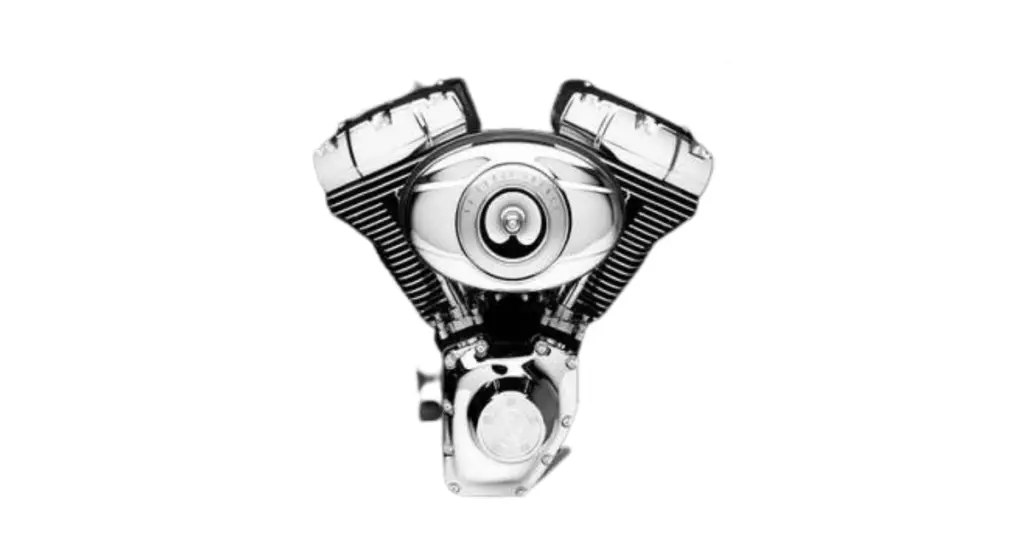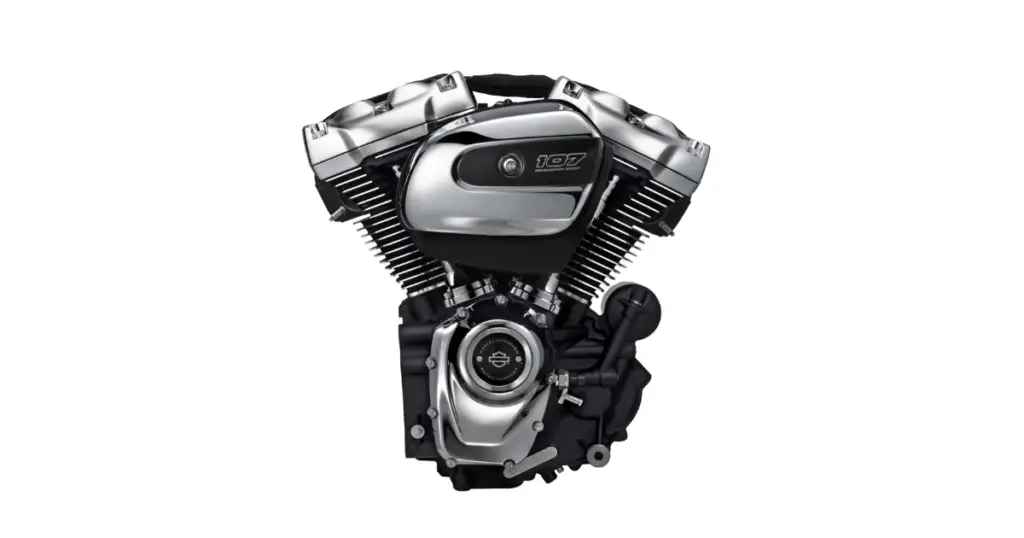When it comes to the heart of a Harley Davidson, the rumbling core that powers the classic American legend, enthusiasts and newcomers alike are often caught in the debate of comparing engines – specifically, the Harley 96 vs 107 differences. With the advancement from the trustworthy 96 cubic inch motor to the robust 107 cubic inch powerplant, riders have noted significant variances in their driving experience. This comprehensive harley 96 and 107 review dives into the unique characteristics of each engine, outlining a true comparison between the two engines. We lay out facts, dissecting their engine specs, and collect real-world insights to guide you through the decision-making labyrinth of these two formidable machines.
You can go to a higher level overview here: Twin Cam vs Milwaukee 8: Harley Motor Shootout
Key Takeaways
- The Harley Davidson 107 engine boasts increased displacement over the 96, translating to better overall performance.
- Anecdotal evidence from riders suggests improved acceleration and higher speed capabilities in the 107 model.
- Harley 96 and 107 horsepower / torque metrics are instrumental in highlighting the 107’s advantage in power delivery.
- In-depth analysis and comparison shed light on subtle yet impactful enhancements from the 96 to the 107 engines.
- User experiences play a vital role in understanding the practical differences between the engines beyond the numbers.
- Technological and design upgrades of the 107 provide smoother operation and a more efficient riding experience.
- The culture of upgrading, tuning, and customization is richer and holds more potential with the 107 ci engine.
Understanding the Evolution: Harley Davidson Engines Through the Years
Harley Davidson’s journey through the annals of motorcycle history has been one of relentless pursuit of power and mechanical symmetry. This storied ride has witnessed numerous engine variations, each leaving an indelible mark on the brand’s legacy. When evaluating the evolution from the Harley Davidson 96 vs 107 engine, it’s essential to consider the technological strides and performance milestones achieved over the years.
Related comparison:
– Harley 88 vs 107: An In-Depth Comparison
– Twin Cam 88 vs 96: Dual Cam Shootout (What’s Better?)
– Harley 88 vs 96 vs 103: An In-Depth Engine Comparison
– Harley 107 vs 114: Milwaukee 8 Worth The Hype? Yes and No
– Harley 107 vs 114 vs 117: A Milwaukee Bound Shootout
The Legacy of the 96 Cubic Inch Engine

The 96 cubic inch engine established an esteemed line of predecessors, epitomizing Harley Davidson’s signature rumble and reliability. Known for its robust build, the 96 boasted commendable horsepower and torque figures that catered to the traditional Harley rider’s demand for a hardy, torquey ride. Although often eclipsed by its successors in terms of raw numbers, the Harley 96 engendered a following staunchly loyal to its time-tested performance.
See more: Best Tuner for Harley 96: Power, Torque, and More
The Introduction of the 107 Cubic Inch Motor

With the introduction of the 107 cubic inch motor, Harley Davidson took a leap forward in the realm of power and efficiency. This newer engine, part of the Milwaukee-Eight family, brought about a smoother operation, thanks in part to a counter-balancer that reduced vibrations. The performance related debate often highlights this key difference, favoring the 107 for its enhanced riding experience without sacrificing the characteristic thrum the brand is known for.
Comparing Engine Features: Design and Technology Upgrades
In the quest for superiority, every new engine model aims to address the shortcomings of its predecessors. Successive engines have showcased design and technology upgrades that tackle challenges like heat management and efficiency. The superiority of the 107’s technology is evidenced by its sophisticated cooling systems and seamless power delivery, which stands out particularly at low RPMs. These upgrades not only underline the horsepower and torque improvements but also Harley Davidson’s dedication to advancing rider-centric performance.
Harley 96 vs 107: Rider Insights and Performance Feedback
When it comes to the this comparison, the voice of the rider community is unequivocal: the upgrade from the 96 to the 107 cubic inch engine has been a much-welcomed change. It’s this real-world feedback from dedicated motorcycle enthusiasts that can be truly revelatory. Those who have put miles on the 107 often speak of the engine’s superior response and tangible uptick in torque output. This translates into a motorcycle that leaps forward with vigor when the throttle is twisted—a characteristic that thrills riders in search of power.
However, the conversation doesn’t end at raw performance. Indeed, talk among Harley Davidson enthusiasts often veers into the technical realm, particularly regarding heat management. Builders and experts stress the critical role of fine-tuning the 107. A properly adjusted setup isn’t just about achieving peak performance; it also contributes significantly to efficient heat dissipation—maintaining an engine that runs cooler and therefore, potentially, lasts longer. This factor is a pivotal part of any review, demonstrating the comprehensive nature with which the newer engine has been refined.
Lastly, when analyzing available upgrades for these engines, it’s clear that the 107 ci engine gives motorcycle modifiers more to work with. Simple aftermarket modifications, like a cam swap, can unleash even more power from the already robust platform. These possibilities open exciting doors for customization, fortifying the already powerful engine to mirror the unique desires of each rider. The sentiment in the community solidifies the 107 ci’s position as the preferable choice for those seeking to tailor their bikes to their riding style and performance demands, marking a step up from its predecessor in adaptability and upgradability.
Read next:
– A Shootout For The Most Reliable Harley Engine (What Is It?)
– Harley Engines by Year: The Legacy of American Motorcycling
Frequently Asked Questions
What are the main differences between the Harley 96 and 107 engines?
The most notable differences between the Harley 96 and 107 engines are the displacement, power output, and technology. The 107 offers more cubic inches, which translates to higher horsepower and torque. It also incorporates modern design and technology upgrades, such as improved cooling systems, which contribute to smoother operation and better efficiency.
How does the performance of the Harley 96 compare to the Harley 107?
Riders generally note that the Harley 107 engine has improved performance over the 96, particularly in terms of acceleration and responsiveness at higher speeds. The additional 11 cubic inches in the 107 engine provide a noticeable increase in power across various gears and a surge of low-end torque from a standstill.
Can upgrading to a 107 increase the horsepower of my Harley?
Yes, upgrading from a 96 to a 107 engine can increase the horsepower of your Harley. The extra displacement in the 107 engine theoretically adds up to 17 horsepower more, though the actual output will depend on the state of tune and the components used.
What are the benefits of the 107’s improved cooling systems?
The 107’s improved cooling systems enhance the engine’s ability to manage heat, which contributes to a smoother operation, reduces the stress on the engine components, and helps maintain performance during extended rides or in hotter climates.
Are there any common upgrades that can enhance the performance of either engine?
Common upgrades for both the Harley 96 and 107 engines include changes to the air intake, exhaust, and camshaft. Aftermarket tuners also recommend optimizing the engine tune for better performance and cooler operation. However, the 107 engine can yield more profound power gains from these simple upgrades when compared with the 96 engine.
Is there a significant increase in torque with the 107 engine?
Yes, one of the most praised attributes of the 107 engine is the increase in low-end torque. Riders report an exhilarating and responsive ride with the 107 compared to the 96, particularly in terms of initial acceleration and low RPM cruising.
Have there been any reported issues with the 107 engines?
As with any mechanical design, new engine iterations can introduce their own set of challenges. That said, any reported issues with the 107 engines are typically addressed through recalls or technical service bulletins by Harley Davidson. Proactive maintenance and proper tuning can prevent or mitigate many common issues.
How do the 96 and 107 engines compare in terms of customizability?
The 107 engine is often favored for its higher ceiling for customization. This is due to the engine’s newer technology base, which allows for a wider range of upgrades that result in significant power increases. This isn’t to say the 96 can’t be customized effectively, but the 107 provides a more robust platform for high-performance upgrades.